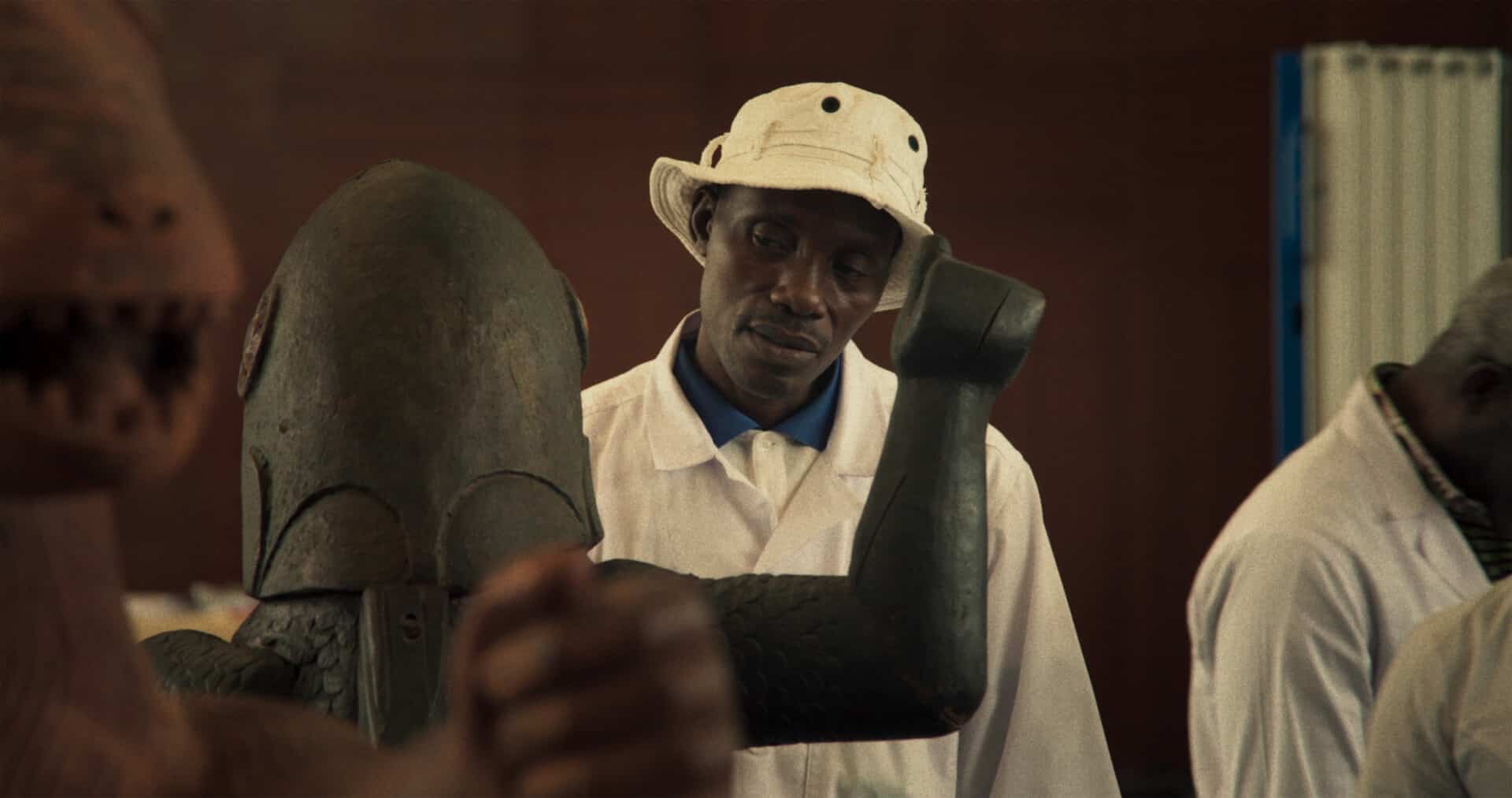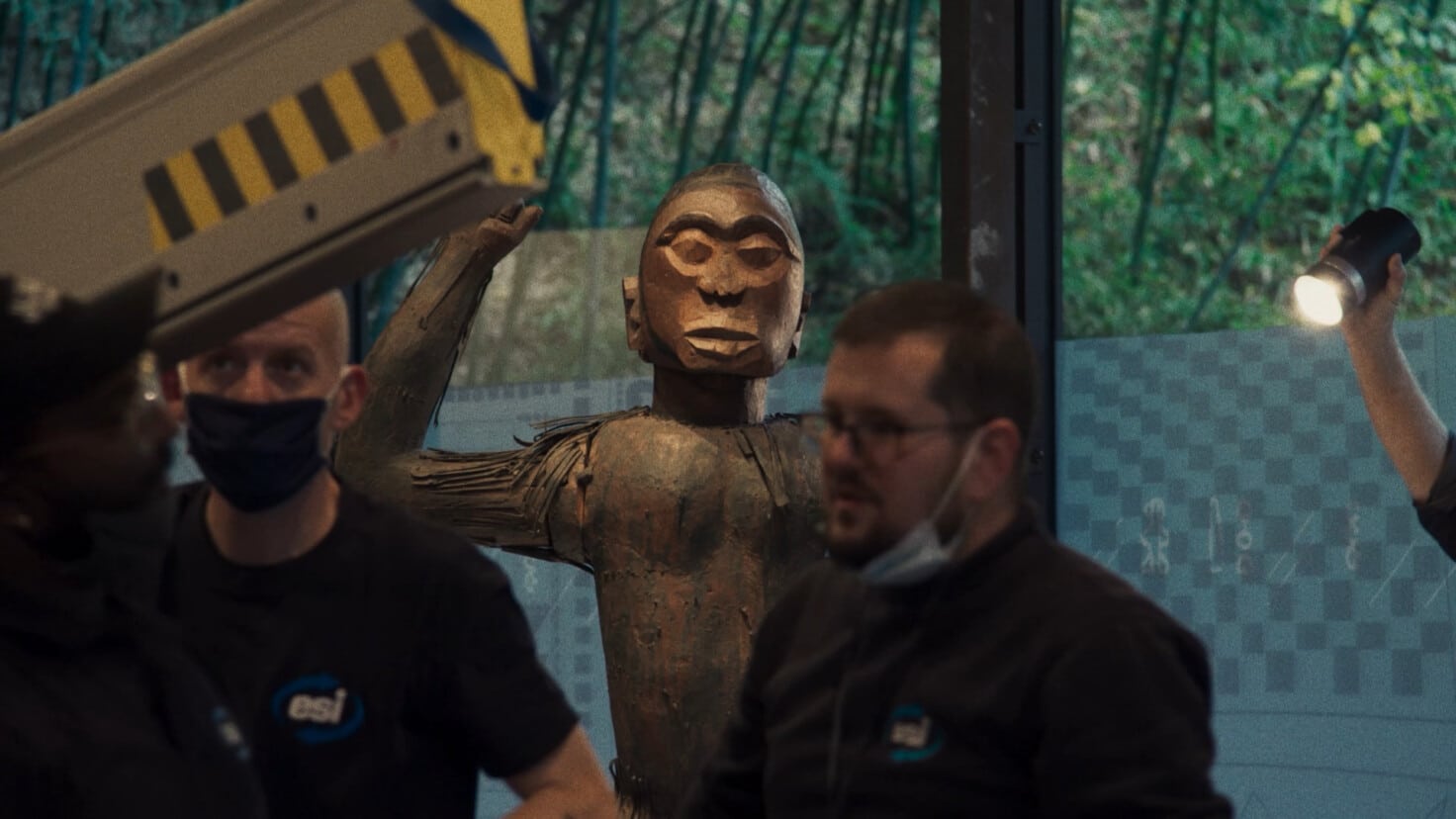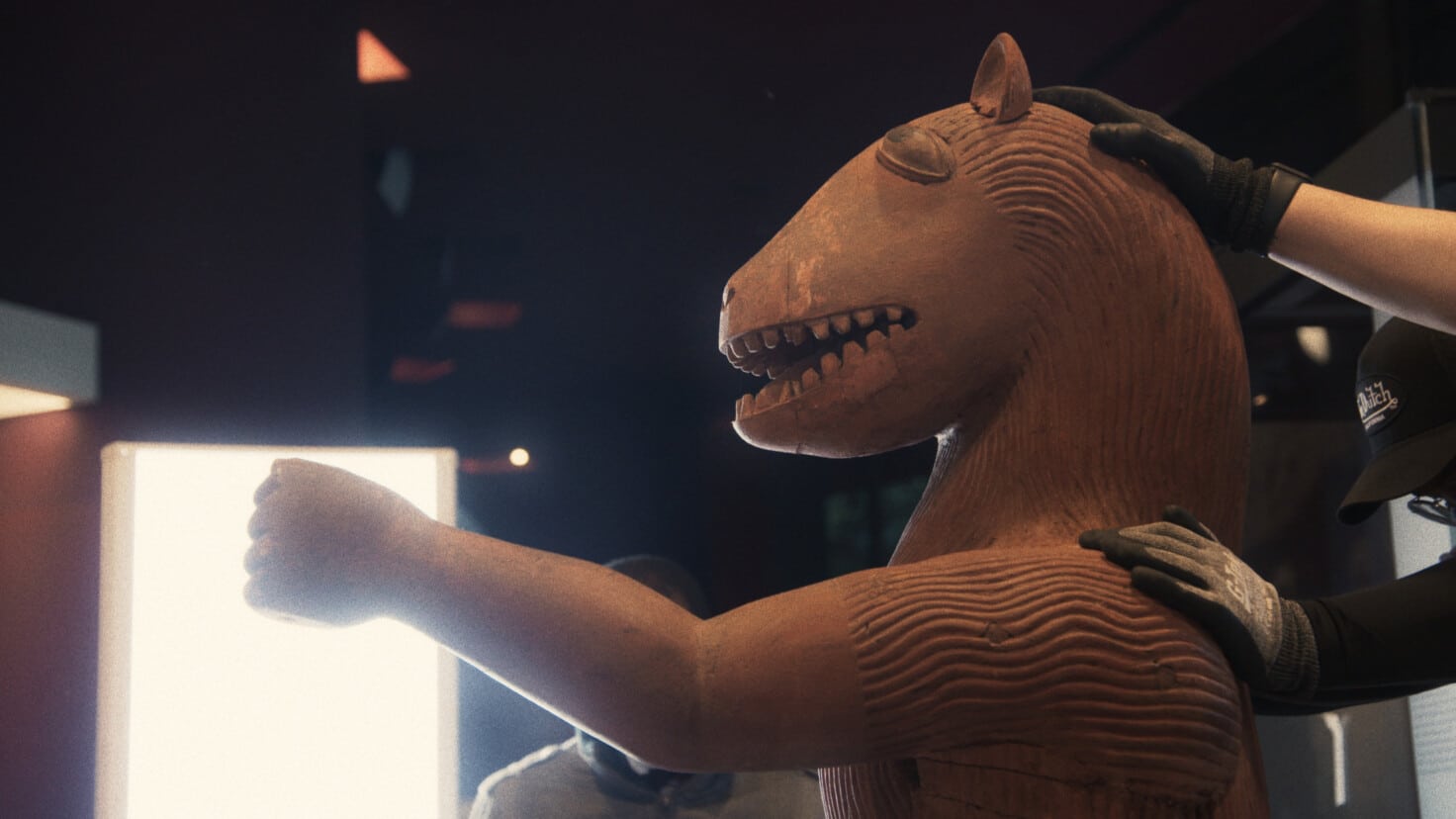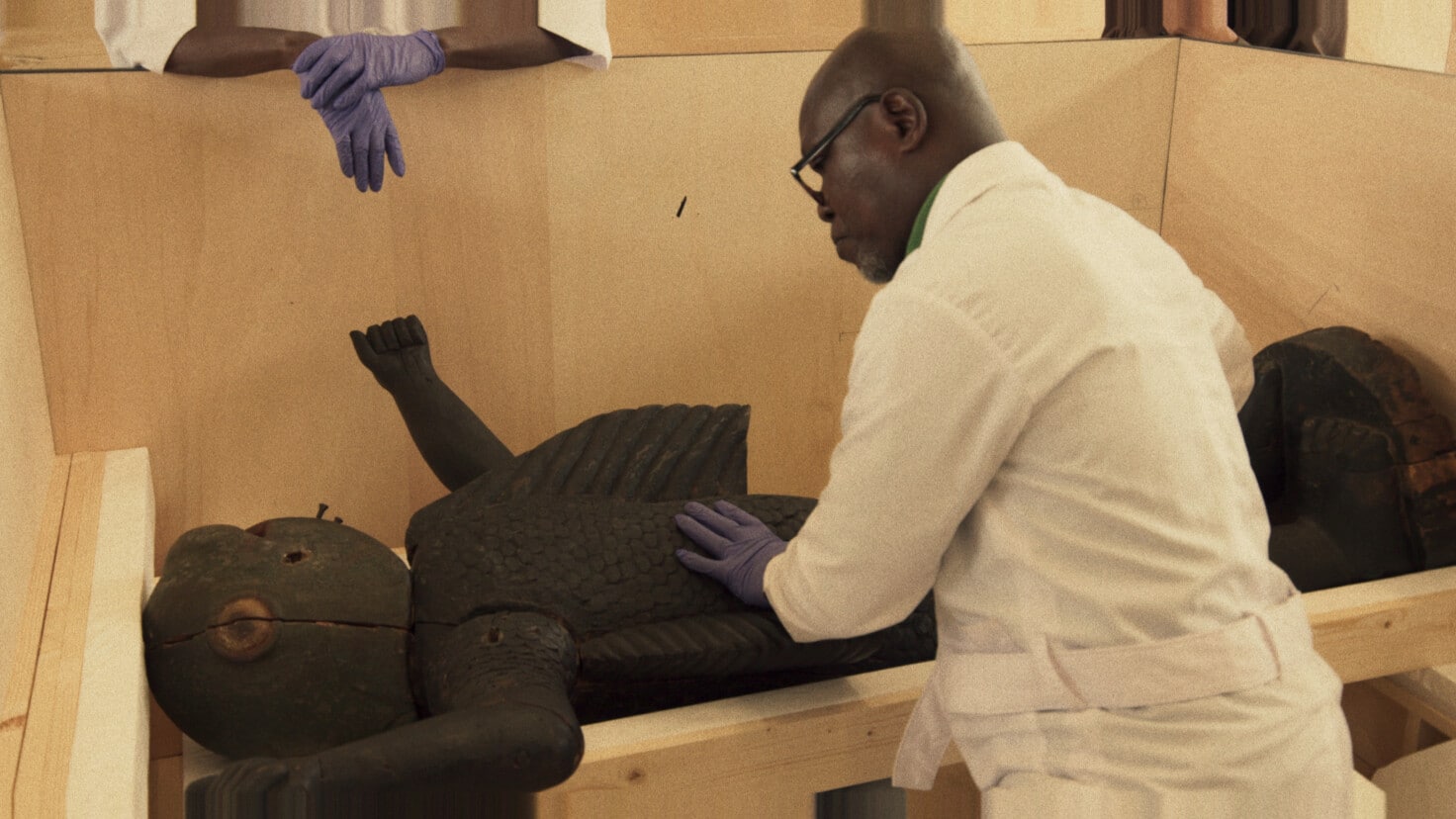Beandrea July: After the film premiered at the Berlinale, you instituted a theatrical run of the film in Benin and Senegal. I actually first saw this film at a movie theater in Dakar last June. Why was it important for you to show the film in movie theaters in West Africa?
Mati Diop: I’m French, Senegalese. I felt it was right, fair, and important that the film would be seen first in Benin and in Senegal. For me, it’s just normal. Why would it come out in France before Africa, before Benin, and before Senegal? It was a political choice, especially in a film about restitution, as a filmmaker of African descent, to decenter myself and my film from France. It’s not to deny my French identity—it’s just not to give it more importance than my African one. This colonial heritage has very wrongly taught us to consider the West as the center, and it’s important that we counter this idea through the decisions we make. So having the film premiere in Dakar and in Cotonou is definitely a way to say, “Well, it starts here, this idea of repossession.”
BJ: What was it like to have the audiences there experience the film? Was there anything unexpected in how they received the film?
MD: For a very long time, there were no movie theaters open, and so to release the film there really confronted me [with] the huge challenge of bringing people back to cinema. And in Benin we did a press conference, and I think it’s the place where we talked the least about the main themes of the film, all the political subjects it brings up. I felt that the press was under censorship. It was quite heartbreaking to witness. And then when we did the screening at the university, I wished that the film would provoke a debate that would be as rich as the debate inside the film, but it wasn’t the case at all. And so it just made me realize that the debates I provoked in the film were not really reflecting the reality of the freedom people have to talk. As a filmmaker, I’m making these films for the people, and it really confronted me [with] the limits of my medium. [In Benin], it’s not easy for people to go to the theaters and debate after the film. You have to create spaces for the films to be seen and for people to feel concerned.
BJ: You had to get the Beninese government’s permission to do your work. How were you able to negotiate a partnership with them that still enabled you to have your creative freedom?
MD: My producers and I knew from the beginning that without the permission of the government, we couldn’t do anything. Very surprisingly, the advisor of the cultural minister is a dramaturg and he ran a festival in Martinique for a long time where he had already programmed [my feature film] Atlantics, so he knew my work very well. I warned them, “You’ve seen Atlantics, so you have an idea of what I stand for. Are you ready to accept that it could have a critical eye?” And they went for it. They basically gave us all the access we needed to shoot, and they respected it until the end. When the film was finished, we went to the president’s palace, and it was very interesting to have their feedback. They could have said, “Oh, you knew nothing of Benin, and you can tell.” The only criticism they made was about the debate. They said, “We’ve heard this debate before here,” and the president said that he was a little bit disappointed by the way [the students] express[ed] themselves. It perfectly [revealed] the lack of listening on their end concerning the youth. Voila—you can’t hear what you don’t want to hear, you know?
BJ: On the subject of the debate, it’s a really important sequence in the film. I would venture to call it a reenactment, although that’s not quite what it is, but it sort of functions that way in the film. Tell us about the casting process and the moment you understood that you would need to create this sequence in particular for the film.
MD: The day the artifacts arrived in Benin, I investigated to see if any debates had been spontaneously organized on the campus. There was a little radio talk show about it, but it was nothing special. The idea of a debate between students was something I envisioned very early on when I decided to make Dahomey, not something that came after, and because it was not initiated by them, I knew that it couldn’t be improvised. I needed to search for a very specific profile of people. So I gathered people with a different relationship to language —not only smart people knowing how to talk, but also shy people. The casting took around a month, and I did it in collaboration with a young filmmaker who assisted me on the film. We took the time to really think about the most accurate questions that could provoke interesting debates. And I chose the place because I wanted a place that was cinematic—the light, the space. This is why I kind of refute the [term] documentary. I really worked as if it was for fiction. We started shooting with three cameras, two inside and one all around the place. Then it was their space, and then it completely belonged to them. The first debate we organized was three hours. Then I came back to Paris. We did a first cut with my editor, Gabriel Gonzalez, and it was very good, but I felt that some angles were missing. And so I went back to make another debate that also lasted three hours, and then we finished editing.



